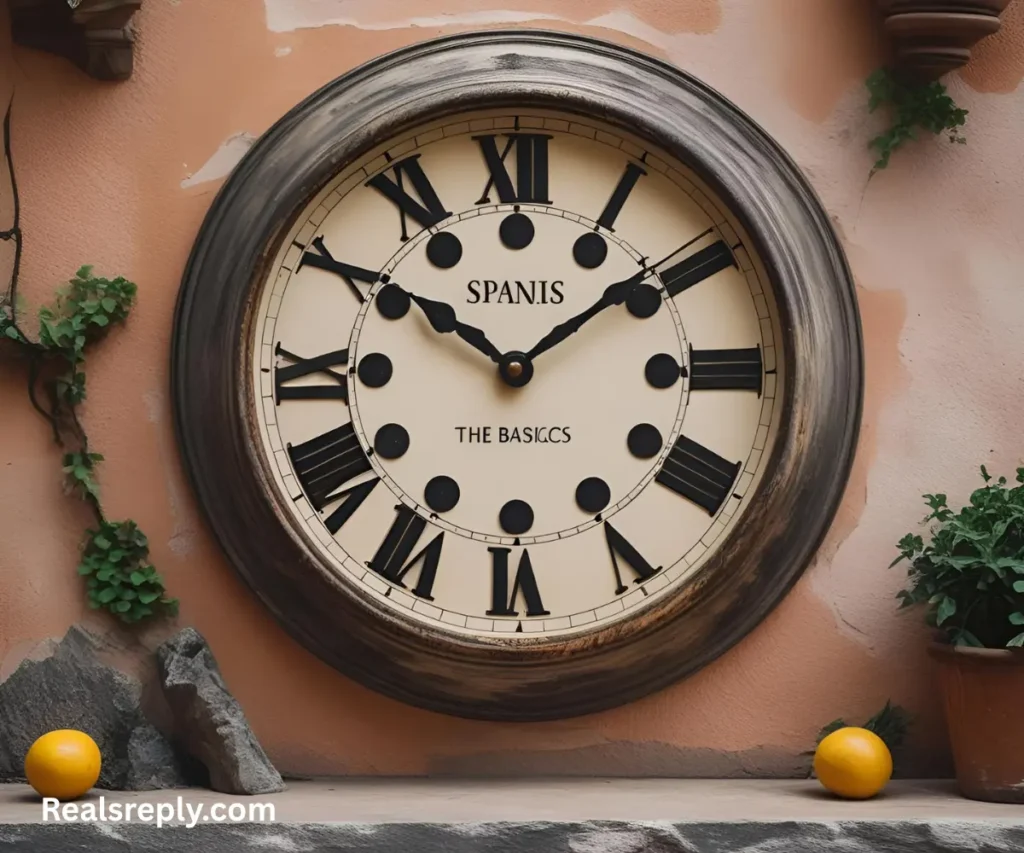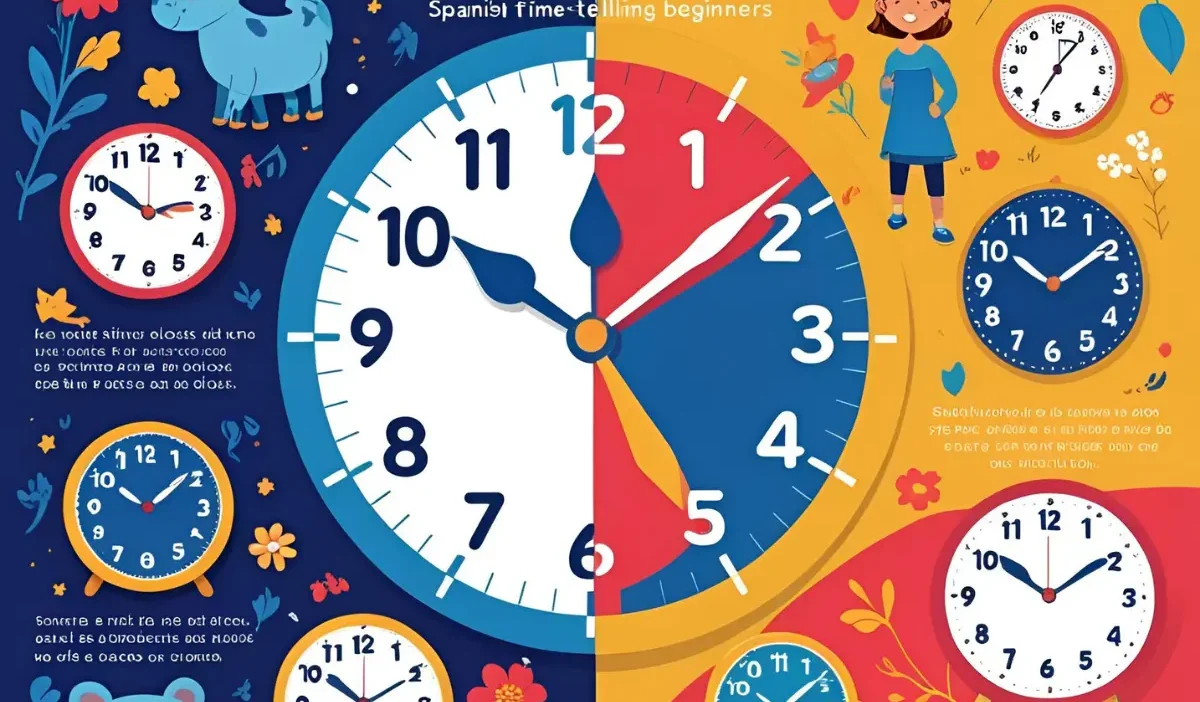Imagine you’re strolling through a vibrant Spanish market, the sun high, vendors calling out, and you need to catch a train.
You glance at your watch, but how do you ask someone the time in Spanish? Learning how to say what time in Spanish is a small but powerful skill that opens doors to confident conversations, whether you’re traveling, meeting friends, or navigating daily life in a Spanish-speaking country.
Knowing how to ask and tell time can make you feel connected and in control, no matter where you are.
In this guide, we’ll break down everything you need to know in simple, friendly steps.
From asking the time politely to understanding responses, we’ve got you covered with practical examples and real-life scenarios.
Let’s dive in and make telling time in Spanish as easy as uno, dos, tres!
Asking the Time in Spanish: The Basics

To ask what time is it in Spanish, you say, “¿Qué hora es?” This simple phrase is your go-to for any situation, from casual chats to formal settings. It’s polite, direct, and universally understood in Spanish-speaking countries. For a softer tone, you can add “por favor” (please): “¿Qué hora es, por favor?”
Real-Life Scenario: You’re at a bus stop in Mexico City, and your phone battery is dead. You need to know if the bus is coming soon. You turn to someone nearby and say, “¿Qué hora es?” They respond, “Son las tres.” Now you know it’s 3:00, and your bus is on time!
Example:
- Say: “¿Qué hora es?” or “¿Me puedes decir la hora, por favor?” (Can you tell me the time, please?)
- Don’t Say: “¿Cuánto tiempo es?” (This means “How much time is it?” and sounds confusing.)
Practice this phrase, and you’ll feel confident asking anyone, anywhere.
Telling the Time: Hours and Minutes
Once you ask what time in Spanish, you need to understand the answer. In Spanish, time is told using “es la” for 1:00 (singular) and “son las” for all other hours (plural). For example, “Es la una” means “It’s one o’clock,” while “Son las dos” means “It’s two o’clock.” To add minutes, use “y” (and) for minutes past the hour, like “Son las cuatro y diez” (It’s ten past four).
Real-Life Scenario: You’re meeting a friend for coffee in Madrid at 5:30 PM. They text, “¿A qué hora llegas?” (What time are you arriving?) You reply, “Son las cinco y media” (It’s five thirty). Clear and simple!
Example:
- Say: “Son las seis y cuarto” (It’s six fifteen or a quarter past six).
- Don’t Say: “Es las seis y quince” (Using “es” for plural hours is incorrect.)
Memorize “es la” for one o’clock and “son las” for others, and you’re halfway there!
Using Half, Quarter, and Minutes
Spanish speakers often use shortcuts for common times like half past or quarter past. For 30 minutes past, say “y media” (half), like “Son las siete y media” (7:30). For 15 minutes past, use “y cuarto” (quarter), like “Son las dos y cuarto” (2:15). For minutes to the next hour, use “menos” (minus), like “Son las ocho menos diez” (Ten to eight).
Real-Life Scenario: You’re in a rush for a flamenco show in Seville, and it starts at 8:00 PM. You ask a local, “¿Qué hora es?” They reply, “Son las ocho menos cuarto” (It’s quarter to eight). You know you’ve got 15 minutes to get there!
Example:
- Say: “Son las nueve y media” (It’s nine thirty).
- Don’t Say: “Son las nueve y treinta” (While technically correct, “y media” is more natural.)
These shortcuts make conversations quick and natural.
AM and PM in Spanish
Spanish speakers use a 24-hour clock for formal settings, but in casual conversation, they clarify AM/PM with phrases like “de la mañana” (morning), “de la tarde” (afternoon), or “de la noche” (night). For example, “Son las tres de la tarde” means “It’s three in the afternoon.”
Real-Life Scenario: You’re booking a dinner reservation in Argentina for 8:00 PM. The host asks, “¿A qué hora?” You reply, “A las ocho de la noche.” They confirm, and you’re set for a delicious evening.
Example:
- Say: “Son las diez de la mañana” (It’s ten in the morning).
- Don’t Say: “Son las diez AM” (AM/PM isn’t commonly used in spoken Spanish.)
Use “mañana,” “tarde,” or “noche” to sound natural and clear.
Common Mistakes to Avoid
When learning how to say what time in Spanish, beginners often mix up singular and plural or forget regional differences. For example, always use “es la” for 1:00 and “son las” for other hours. Also, in some countries, like Spain, people might say “cuarto” for 15 minutes, while in Latin America, “quince” (fifteen) is common. Another mistake is forgetting “menos” for minutes to the hour.
Real-Life Scenario: You’re in Peru, asking for the time before a tour. You say, “¿Es la hora?” instead of “¿Qué hora es?” The guide looks confused. Stick to the correct phrase to avoid mix-ups.
Example:
- Say: “Son las cuatro menos diez” (Ten to four).
- Don’t Say: “Son las cuatro y menos diez” (Using “y” with “menos” is incorrect.)
Double-check your phrases, and you’ll sound like a pro.
Practice Makes Perfect: Fun Ways to Learn
The best way to master how to say what time in Spanish is to practice in real-life situations. Try setting your phone clock to Spanish and practice saying the time out loud. Watch Spanish shows and listen for time-related phrases. You can also play a game with friends: set a timer and take turns asking, “¿Qué hora es?” and answering in Spanish.
Real-Life Scenario: You’re learning Spanish with a study group. You quiz each other by pointing at a clock and saying, “Son las…” It’s fun, and soon, telling time feels natural.
Example:
- Say: “Son las once y cuarto de la mañana” (It’s eleven fifteen in the morning).
- Don’t Say: Random guesses without practicing the structure.
Practice daily, and you’ll be fluent in no time!
Conclusion
Mastering how to say what time in Spanish is a game-changer for anyone learning the language or traveling to a Spanish-speaking country.
From asking “¿Qué hora es?” to understanding responses like “Son las cinco y media,” these skills help you navigate daily life with ease.
Whether you’re catching a bus, meeting friends, or making reservations, knowing how to tell time in Spanish builds confidence and connection.
Practice the phrases, avoid common mistakes, and use shortcuts like “y media” or “menos cuarto” to sound natural.
With a little effort, you’ll be telling time like a native speaker.
So, grab a clock, start practicing, and enjoy your journey into Spanish!




